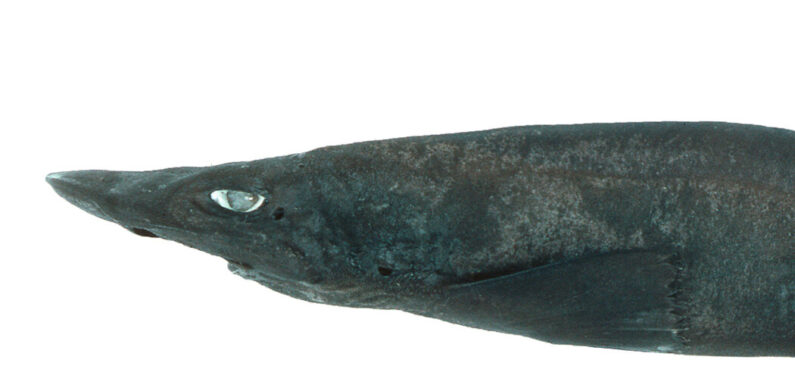
What has long, bright white eyes, swims along the deep waters off Australia and attaches its eggs to coral?
A new species of shark, called Apristurus ovicorrugatus.
The discovery process began several years ago, when researchers were going through uncataloged materials in the Australian National Fish Collection, housed in Hobart, where they found a mysterious egg that they were unable to assign.
That led to a fact-finding mission that eventually revealed a new species of demon catshark.
The researchers announced their discovery in a paper published in the Journal of Fish Biology and titled “What came first, the shark or the egg?”
The Apristurus genus, the second-most diverse group of sharks that counts about 40 species, is commonly known as the ghost or demon catshark. The name is based “on the fact that they’re deep dwelling and kind of a bit spooky,” said Helen O’Neill, a research technician and one of the paper’s authors. The sharks are bottom feeders and have elongated catlike eyes.
But something makes the newly discovered species even spookier. These catsharks have bright white irises, an unusual feature for deepwater creatures. Ms. O’Neill said she could only theorize as to why a shark would have such white eyes. They might help them see better in the dark, she said.
Only one other Apristurus catshark has white eyes, but researchers were able to determine a difference between the two similar species because of their egg casings.
The Apristurus ovicorrugatus’ egg cases have strong T-shaped ridges, the authors said; the name ovicorrugatus refers to these corrugated egg cases. The unique markings were first described by scientists in a 2011 paper, which is also the first recording of the egg cases, but they lacked enough evidence to determine it a new species.
The egg cases helped researchers learn that the new species lays its eggs by attaching them to coral, which stops them from being dragged away by currents.
Using egg case morphology and other methods, like studying teeth, scales, genetics and livers, the scientists were able to write and submit a first draft of the study — but it wasn’t accepted because it lacked genetic material, Ms. O’Neill said.
She feared that process could take 20 years. “I could be dead before that happens,” she said.
The researchers needed more evidence, but hadn’t been able to get genetic material from the original egg case specimen because it had already been preserved and the egg cases themselves also have too much collagen to be properly tested.
Then late last year, a research voyage off Western Australia was successful in finding Apristurus ovicorrugatus egg cases. “That was so lucky,” said Ms. O’Neill.
Reproduction in sharks differs vastly: some lay eggs while others hatch them internally, and yet others give birth to live young. But the Apristurus genus display a mode of egg-laying in pairs, one for each ovary, of which, these sharks have two. That leads to two egg cases.
And one of those egg cases researchers found had an embryo, which was able to provide the necessary genetic material.
“This is the final piece of the puzzle,” Ms. O’Neill thought, “in proving this is a new species.”
Source: Read Full Article